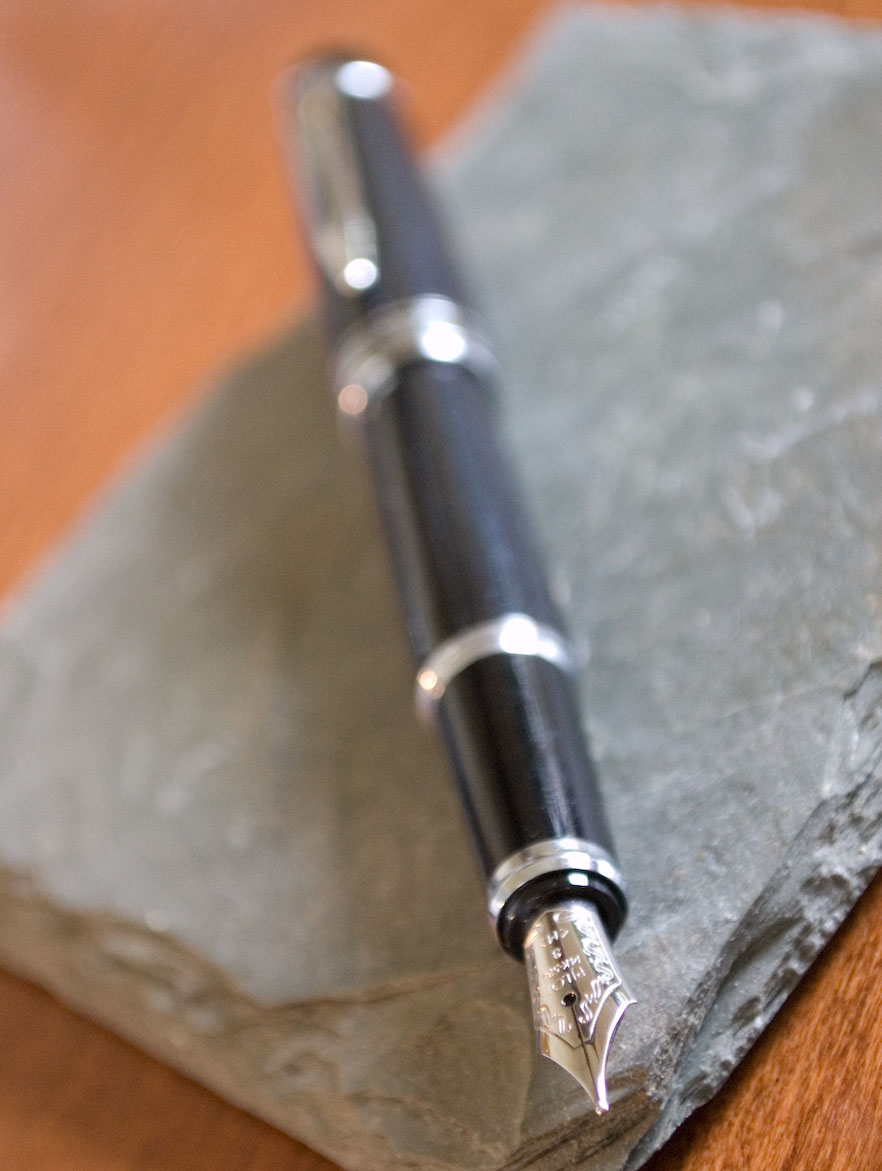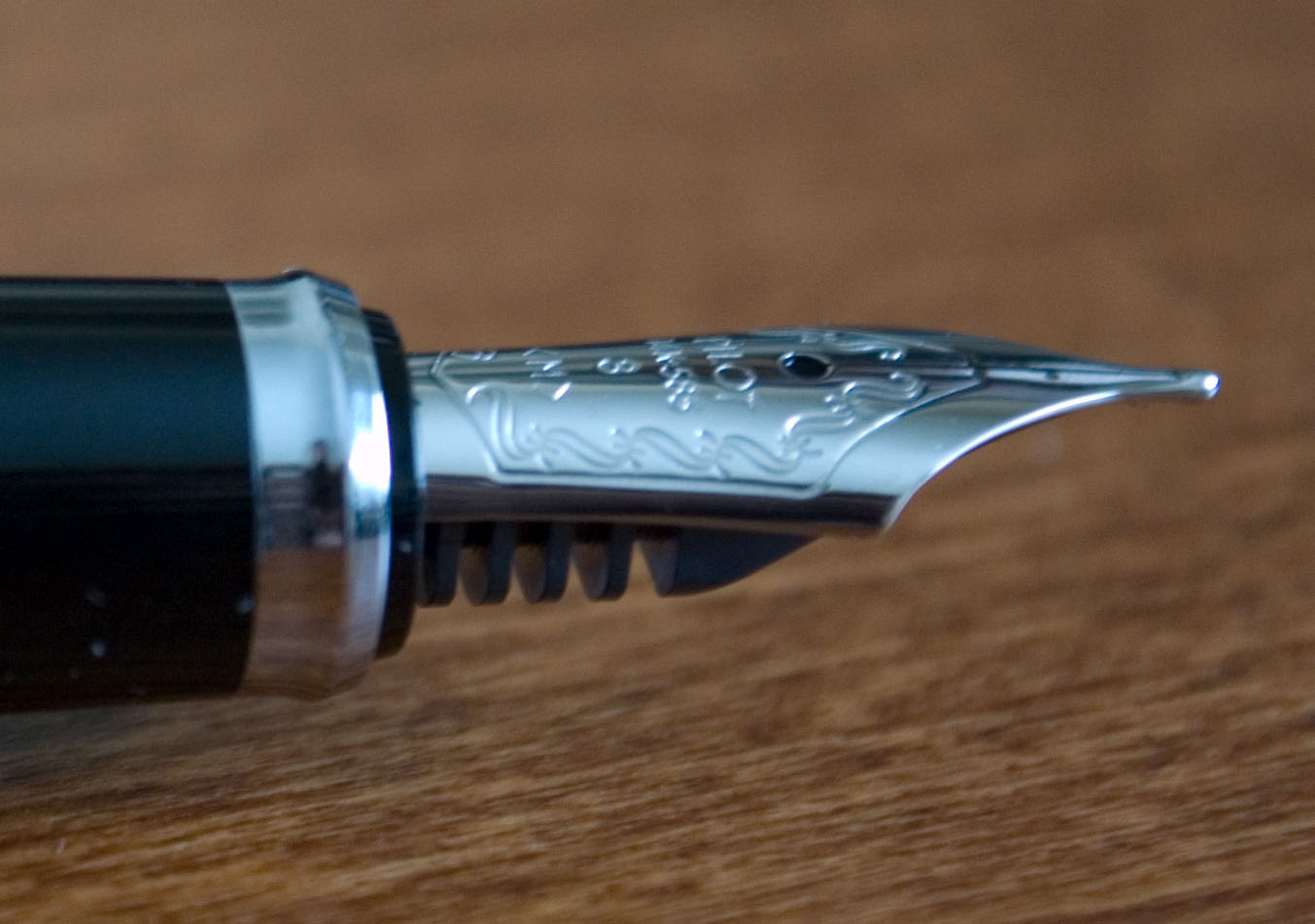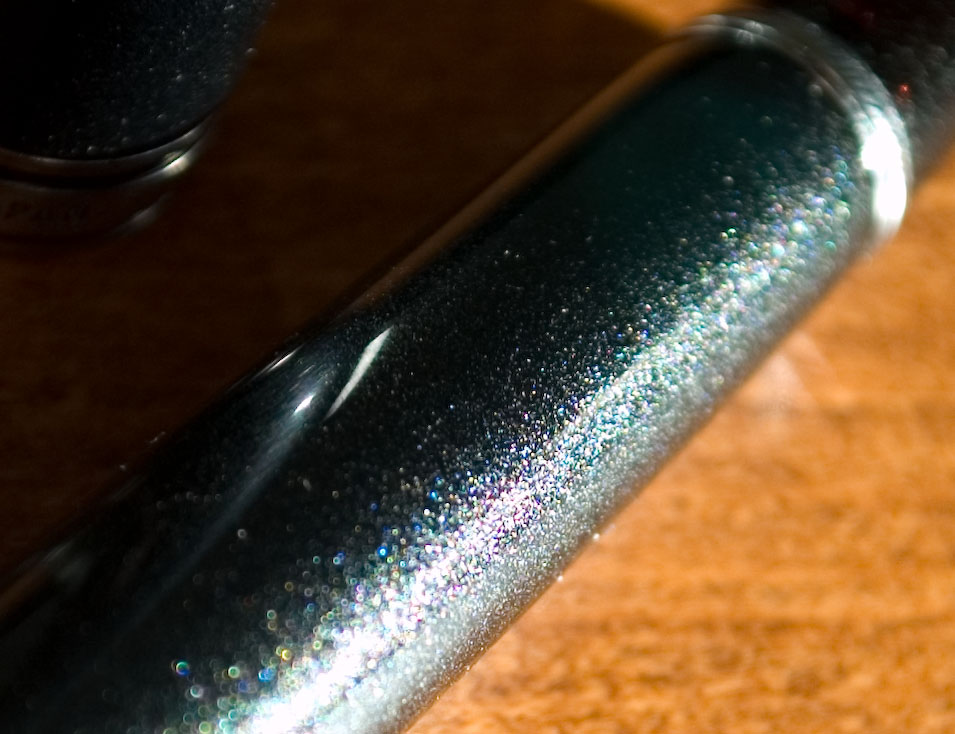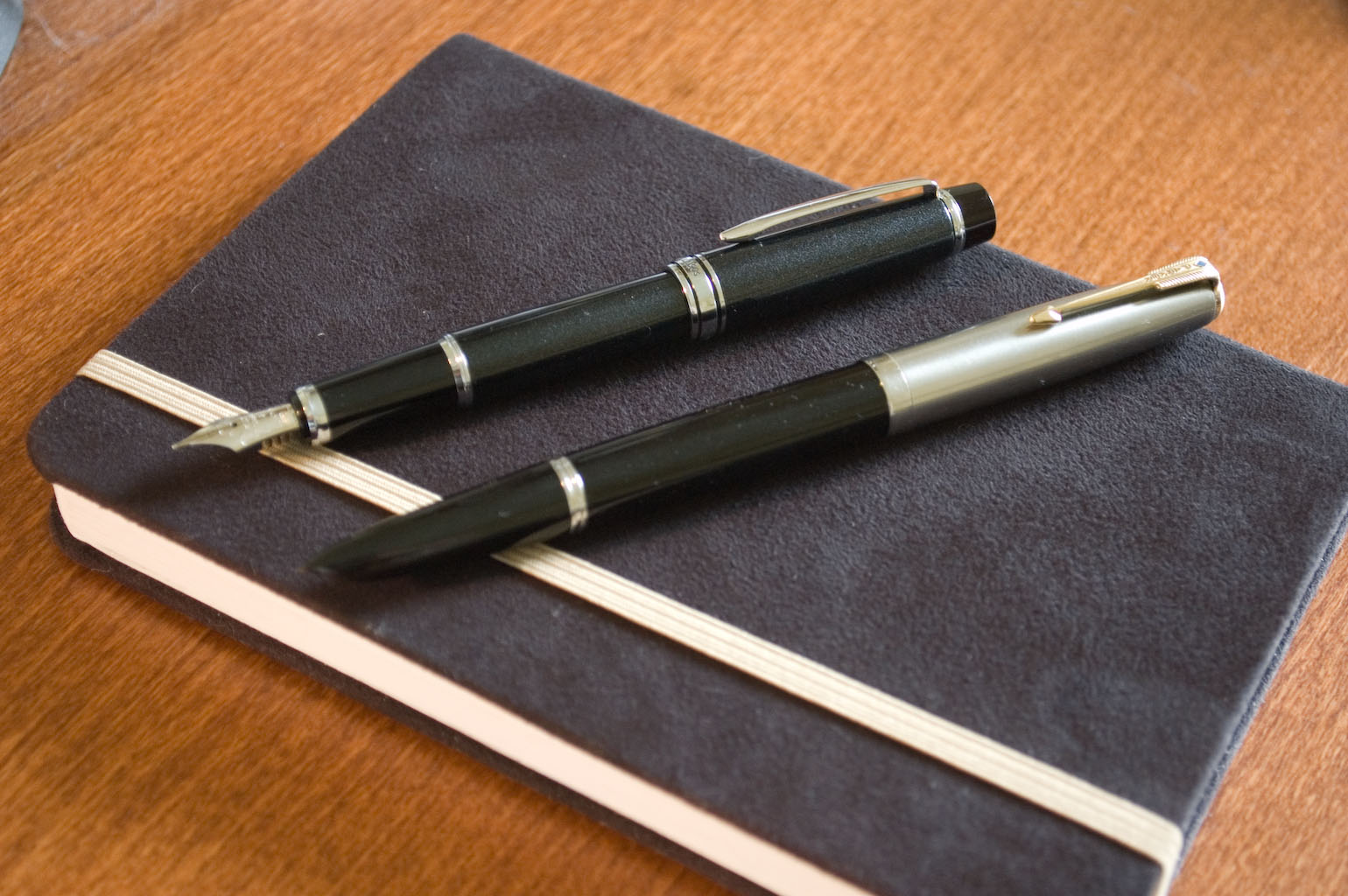
Little Star
 Pilot is quickly becoming my favorite pen manufacturer and my least favorite pen company at the same time. Their design and attention to detail is remarkable, their quality control appears to be currently unparalleled in the industry, and their prices run on the low side compared to pens of similar quality of design. In these regards, Pilot is making most of the rest of the industry look bad. What’s the catch? Pilot USA won’t sell these pens.
Pilot is quickly becoming my favorite pen manufacturer and my least favorite pen company at the same time. Their design and attention to detail is remarkable, their quality control appears to be currently unparalleled in the industry, and their prices run on the low side compared to pens of similar quality of design. In these regards, Pilot is making most of the rest of the industry look bad. What’s the catch? Pilot USA won’t sell these pens.
The newest addition to Pilot’s line-up is the Stella 90s, a squarish-ended lacquer-over-brass fountain pen with a 14 karat gold nib and a ¥10,000 pricetag. As of this writing, that’s approximately $96 US Dollars, which is a very reasonable price for a good-quality fountain pen with a 14K nib. The only way you can buy this pen in the US is to purchase from a specialty import store, or to get one from an eBay seller. Like most of Pilot’s fountain pen line, Pilot USA will not be offering the Stella 90s. Neither stationery stores, nor art supply stores, nor premium pen shops will be able to order it through their distribution channels.
 The Stella 90s has a delightfully smooth nib, which I’ve come to expect from Pilot. It’s a wetter writer than most, and on porous paper it is saved only by the nib being on the fine side of what people unused to Japanese fountain pens would expect. On better grades of paper, however, I’ve run into no problems with the generous inkflow. Even on the temperamental Moleskine paper the Stella’s medium nib and a free-flowing ink (I’ve tested with Pilot Black in the cartridge that came with the Stella 90s) the worst I’ve experienced is some spidering or feathering. That’s pretty much par for the course with Moleskine paper anyway.
The Stella 90s has a delightfully smooth nib, which I’ve come to expect from Pilot. It’s a wetter writer than most, and on porous paper it is saved only by the nib being on the fine side of what people unused to Japanese fountain pens would expect. On better grades of paper, however, I’ve run into no problems with the generous inkflow. Even on the temperamental Moleskine paper the Stella’s medium nib and a free-flowing ink (I’ve tested with Pilot Black in the cartridge that came with the Stella 90s) the worst I’ve experienced is some spidering or feathering. That’s pretty much par for the course with Moleskine paper anyway.
The Pilot #3 nib is nowhere near what I’d call flexible or even semi-flex, but it does have just a bit of give to it. This provides a hint of personality to the line it puts down without making the nib overly fragile or difficult to control. It’s a pleasure to write with and leaves the sort of lines you’d like to see in your handwriting.
 The Stella 90s’s body and cap are of the squared-end variety, lending it some distinction among a sea of cigar-shaped pens. Chromed rings at the ends and at the base of the cap and section accent the look, balancing the strong vertical lines with horizontal strokes which serve also to hide somewhat the dramatic increase in circumference between the body and the cap. The barrel and cap are finished with a shimmering fine speckle pattern that almost disappears, adding some charm to the look of the Stella 90s while staying in the bounds of taste. A glittery finish could ruin the quiet, respectful look the pen has to it, but one really must look intently upon the Stella 90s to see the subtle shimmer. When it is seen, it’s like a charcoal texture, except with multicolored highlights.
The Stella 90s’s body and cap are of the squared-end variety, lending it some distinction among a sea of cigar-shaped pens. Chromed rings at the ends and at the base of the cap and section accent the look, balancing the strong vertical lines with horizontal strokes which serve also to hide somewhat the dramatic increase in circumference between the body and the cap. The barrel and cap are finished with a shimmering fine speckle pattern that almost disappears, adding some charm to the look of the Stella 90s while staying in the bounds of taste. A glittery finish could ruin the quiet, respectful look the pen has to it, but one really must look intently upon the Stella 90s to see the subtle shimmer. When it is seen, it’s like a charcoal texture, except with multicolored highlights.
I’m in favor of the chromed furniture and the rhodium-plated nib. With all the gold-trim pens out there, it’s nice to see the black-and-silver combination done so handsomely.
So what don’t I like about this pen? Its size. While of a good weight and balance, the Stella 90s is a teensy little thing. It is most comparable to the miniature Pilot Birdie, being just a few millimeters longer and a bit bigger around. The Birdie is a highly utilitarian pen that to my mind is reserved for travel or other situations requiring a minimum of bulk. It’s the sort of pen one wouldn’t mind getting scratches on the finish. The Stella 90s is a great-looking pen with a bit of class. I don’t think it needs to be pampered and kept in a storage compartment away from ink and hands, but I don’t see it as a knockaround pen either. Personally, a pen that small needs to have some redeeming feature. The Stella 90s is really too small for my hands.
 Pictured here for scale is the Stella 90s next to a standard size Parker ‘51’. The ’51′ is a medium-sized pen, comparable in size to Pilot’s Knight and just a tad shorter than a Rotring 600. As you can see, the Stella 90s is dwarfed by the ‘51’. For further reference, the Derwent journal both pens lie atop is 120mm by 170mm or 4.72″ by 6.69″. It’s a good deal smaller than the large Moleskine notebooks.
Pictured here for scale is the Stella 90s next to a standard size Parker ‘51’. The ’51′ is a medium-sized pen, comparable in size to Pilot’s Knight and just a tad shorter than a Rotring 600. As you can see, the Stella 90s is dwarfed by the ‘51’. For further reference, the Derwent journal both pens lie atop is 120mm by 170mm or 4.72″ by 6.69″. It’s a good deal smaller than the large Moleskine notebooks.
While I think this would be a fantastic pen for anyone who prefers very small pens, it’s really too small for me. I’m imagining it being good for someone with very small hands. Although here’s where there could be an issue. For a pen this small, it is fairly weighty. As already mentioned it is well-balanced, but I suspect that generally people who prefer smaller pens prefer lighter pens. I’m sure that’s not universal, but it’s something to be aware of. 22 grams is hardly a heavyweight, but compared to other similarly sized pens, this will be one of the most solid-feeling.
Overall while it’s not a suitable pen for me this is a superb pen, especially for its price point. The Stella 90s is well-made, solidly constructed, of good materials and excellent workmanship. It comes with Pilot’s CON-20 ærometric-style converter which holds a good deal of ink for a converter. It certainly doesn’t have the capacity of a piston-filler, but it will outwrite pens with twist-type converters by a good margin. If you like small pens, this is the one you’ve been waiting for.
Pilot Stella 90s: 22 grams
